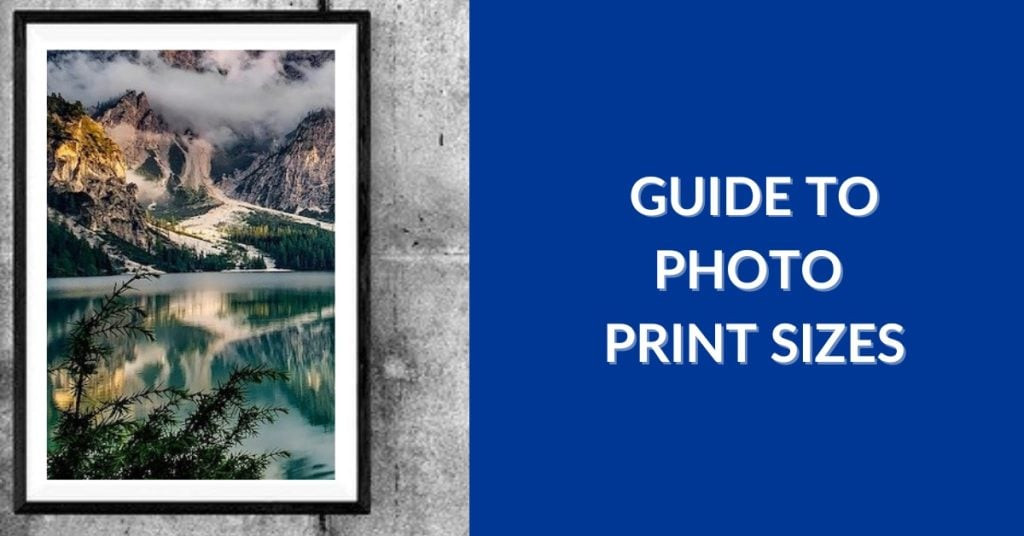From passionate hobbyists to seasoned professional photographers and artists, grasping photo print sizes is fundamental to the success of any visual project. While it may seem straightforward, a solid understanding of correct dimensions is crucial. It helps prevent issues like pixelation and distortion, and simplifies the selection of picture frames. Furthermore, knowing standard photo print sizes in advance allows you to strategically plan your shots and artwork, ensuring your creative efforts translate perfectly into physical prints.
This comprehensive guide will explore the most common and standard photo print sizes used across various applications. We will also delve into aspect ratios and other essential aspects of photo dimensions to equip you with the knowledge you need for perfect prints every time.
Why Choosing the Right Image Size is So Important
In photography, photo printing, and the world of printed art, size truly matters. Selecting the appropriate size ensures your photographs and artwork are displayed at dimensions that enhance their visual impact and showcase their best features. The right size complements the subject matter and viewing distance, making the artwork more engaging and aesthetically pleasing.
Furthermore, choosing the correct picture sizes can significantly streamline your workflow by minimizing or eliminating the need for cropping. When you plan your photography or artwork with standard print sizes in mind, you reduce administrative tasks and ensure a smoother transition from digital creation to physical print. This foresight saves time and effort, allowing you to focus more on your creative process.
What is Aspect Ratio in Regards to Picture Sizes?
Aspect ratio is a term that defines the proportional relationship between an image’s width and its height. It’s expressed in a format like ‘X:Y’, where X and Y are whole numbers representing the ratio. Aspect ratios are essential for understanding not just the size of a photograph or image, but also its shape, which will always be a variation of a rectangle or a square.
For example, a 1:1 aspect ratio signifies that the width and height are equal, resulting in a perfectly square image. Conversely, a 3:2 aspect ratio indicates a rectangular image where the width is proportionally larger than the height. Understanding aspect ratios is crucial because it dictates how your image will be cropped or stretched when printed at different standard photo sizes.
Common Aspect Ratios
Different aspect ratios are suited to various purposes and are inherently linked to different mediums, from social media to cinema screens. Here’s a breakdown of common aspect ratios:
1:1
This ratio produces a square image, where the width and height are identical. The 1:1 ratio is widely used for social media profile pictures, icons, and thumbnail images. It’s also a classic choice for small to medium-sized artistic photos or artwork, offering a balanced and symmetrical composition.
3:2
The 3:2 aspect ratio is a standard in both digital photography and traditional film. Notably, it’s the native aspect ratio for classic 35mm film cameras, which has heavily influenced digital photography. Many DSLR and mirrorless cameras use sensors with a 3:2 aspect ratio. This ratio is versatile and well-suited for general photography, portraits, and landscapes, translating beautifully to standard photo print sizes like 4×6 inches and larger.
4:3
Historically prevalent in computer monitors, standard definition televisions, and older digital cameras, the 4:3 aspect ratio is less widescreen than modern standards. It’s still a useful ratio, particularly when creating content intended for display on devices with 4:3 screens or when aiming for a more classic, less elongated look in your photography.
16:9
The 16:9 aspect ratio has become the dominant standard for widescreen televisions, computer monitors, and high-definition video content. It’s the aspect ratio you typically encounter when watching movies or modern TV shows. Its rectangular shape, being wider than the 4:3 ratio, provides a cinematic feel and is excellent for landscape photography and video that aims for a widescreen presentation.
What Are the Standard Photo Sizes Used for Prints?
Photo prints are the tangible outcome of your digital creativity, allowing you to share and display your work in a physical form. However, incorrect sizing can lead to loss of image resolution or unwanted cropping, cutting off crucial parts of your image. Therefore, understanding standard picture sizes and their corresponding aspect ratios is vital for achieving high-quality prints.
4 x 6 inches
Often considered the most popular or “normal photo size,” the 4×6 inch print perfectly matches a 3:2 aspect ratio. This makes it an ideal choice for standard snapshots, framed photos, greeting cards, and postcards. For optimal print quality at this size, aim for a digital image resolution of 1200 x 1800 pixels.
 Guide to Photo Print Sizes: common standard dimensions for printing photographs.
Guide to Photo Print Sizes: common standard dimensions for printing photographs.
5 x 7 inches
Slightly larger than the 4×6, the 5×7 inch size is excellent for displaying slightly more prominent photo prints and artwork. When capturing images intended for this size, a 3.5:2.5 aspect ratio is recommended. For best results in print, a digital image resolution of 1500 x 2100 pixels is generally ideal.
8 x 10 inches
As a mid-range standard photo print size, the 8×10 inch print is versatile and widely used for portraits and general photographs. An aspect ratio of 5:4 on your camera is typically the closest match for this size. While some minor cropping on the sides might be necessary, it should be minimal. When composing your shot for an 8×10 print, it’s wise to ensure no critical elements are positioned at the very edges of the frame to accommodate potential cropping.
8.5 x 11 inches
This size, equivalent to standard US letter paper, is perfect for larger framed prints, documents, or small posters. For the best results with an 8.5 x 11 inch print, a 4:3 aspect ratio is recommended. Resizing your image to approximately 3400 x 4400 pixels will ensure good print quality.
12 x 18 inches
The 12×18 inch print size is well-suited for showcasing larger photographs and art pieces. For optimal results at this size, aim for a digital image resolution of around 3600 x 5400 pixels and an aspect ratio of 3:2. This combination ensures clarity and detail in larger prints.
18 x 24 inches
Moving into larger sizes, the 18×24 inch print makes a significant visual impact. To maintain quality at this scale, it’s best to aim for a digital image resolution of 5400 x 7200 pixels and an aspect ratio of 3:4. These specifications will help produce a sharp and impressive large print.
24 x 36 inches
This extra-large print size is designed to truly impress, making it ideal for statement pieces and impactful displays. To ensure your 24×36 inch prints are of the highest quality, target a high digital image resolution of 7200×10800 pixels and an aspect ratio of 3:2. These specifications will maximize the visual impact and detail of your extra-large prints.
Photo Print Sizes – Not So Complicated After All
Once you become familiar with the standard photo sizes for prints and the concept of aspect ratios, you gain the essential tools and knowledge to ensure your photos and artwork translate beautifully from digital to print. Understanding these dimensions empowers you to plan your photography and art effectively, resulting in prints that are exactly as you envisioned.
More Photo FAQs
What are the standard print sizes?
Standard print sizes for photographs commonly include 4×6 inches, 5×7 inches, 8×10 inches, and 11×14 inches. These sizes are widely available and suitable for a variety of purposes from personal photos to framed art.
What is the standard photo size?
While “standard photo size” can vary depending on context and industry norms, a commonly recognized standard size for printed photographs is 4×6 inches. This size is frequently used for everyday photos and is widely supported by photo printing services and frame manufacturers.
Written by Mark Rogers
Mark Rogers is the President and Co-Founder of Frame Destination. With over 20 years of experience in the field, Mark is a respected authority on framing techniques and best practices. He is known for his innovative approaches to custom framing and providing exceptional frame services for photographers and artists.
